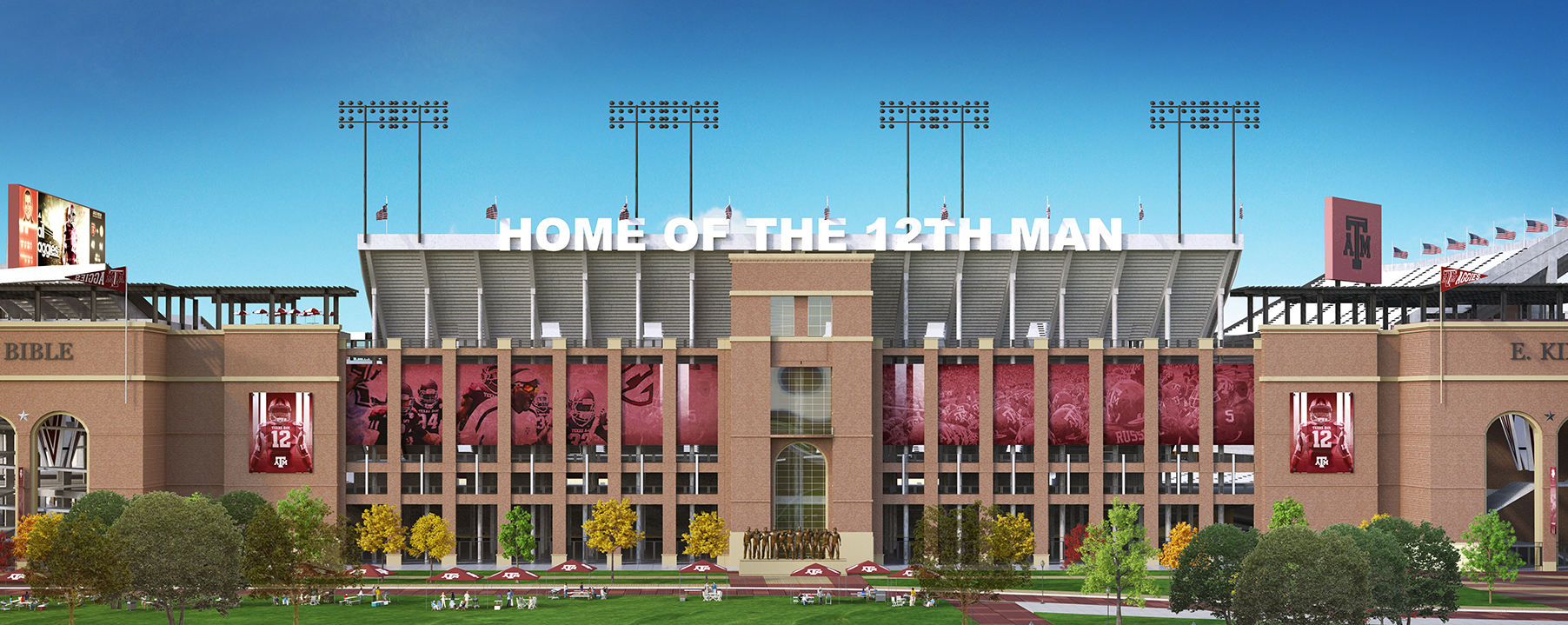Critics, fans and industry experts touted Texas A&M’s renovated Kyle Field as college football’s premier stadium when the doors opened for the 2014 season – and the $450 million renovations were only half complete. Still, the stadium’s 20,000 additional seats, new statues and 163-foot wide 1080p video screen – the largest in college athletics – wowed attendees.
“We've been watching them build it for nine months now, and now you get to see the final, well somewhat half final product,” fan Doug Heath told local television news outlet KBTX. “Very impressive.”
With all the clamor surrounding the project, it’s no surprise Enterprise Concrete’s Scott Davis, plant manager for the new Corsicana, Texas, plant, was excited to get an opportunity to form the stadium’s 311,000 square foot brick facade.
“It’s the largest job in company history,” he said. “It’s a great win over the competition - especially for a new plant.”
Manhattan-Vaughan Construction, the general contractor for the renovation, contacted Enterprise early in the planning process to discuss design and pricing for the 311,000 square foot façade, Davis said. Together, they decided on a design alternating between red, beige and brown brick, allowing Kyle Field to complement existing campus structures, which are mostly beige or brown.
Texas A&M officials broke ground on the project in September 2013, and Enterprise began pouring the panels that December. The plant would inlay the brick into an exterior concrete skin that would be transported to the site in College Station, Texas.
Plant management knew a quick, clean form release would be needed to ensure the completed panels met aesthetic requirements, and met the Kyle Field renovation’s demanding schedule.
Wax has long been the primary option for brick form release, but it often leave surfaces stained with residue and can clog plant drainage systems during cleanup, causing applicators and precasters to spend more time cleaning between pours than necessary.
Enterprise employees went in search of other release agent options, eventually discovering Nox-Crete’s Brick Release chemical form release agent, Davis said. After testing the product, they decided it was the best option for the project, due to its manageable cleanup, efficiency and low cost.
“Wax tends to clog up our water recycling station,” Davis said. “The time it takes to remove wax from brick is a burden, while Brick Release washes right off. We were able to apply it to the brick and remove it in half the time it takes to remove wax.”
That efficiency allowed Enterprise to get their panels to Kyle Field on schedule, ensuring Aggies fans’ new stadium would be beautiful in time for kickoff.
“It all made for a great deal of satisfaction and confidence with the new plant,” Davis said.
Kyle Field isn’t the company’s first foray into college athletic infrastructure either – the Omaha, Nebraska-based company also worked on a skybox addition for the University of Nebraska-Lincoln’s Memorial Stadium.
 chemical solutions to concrete problems
chemical solutions to concrete problems